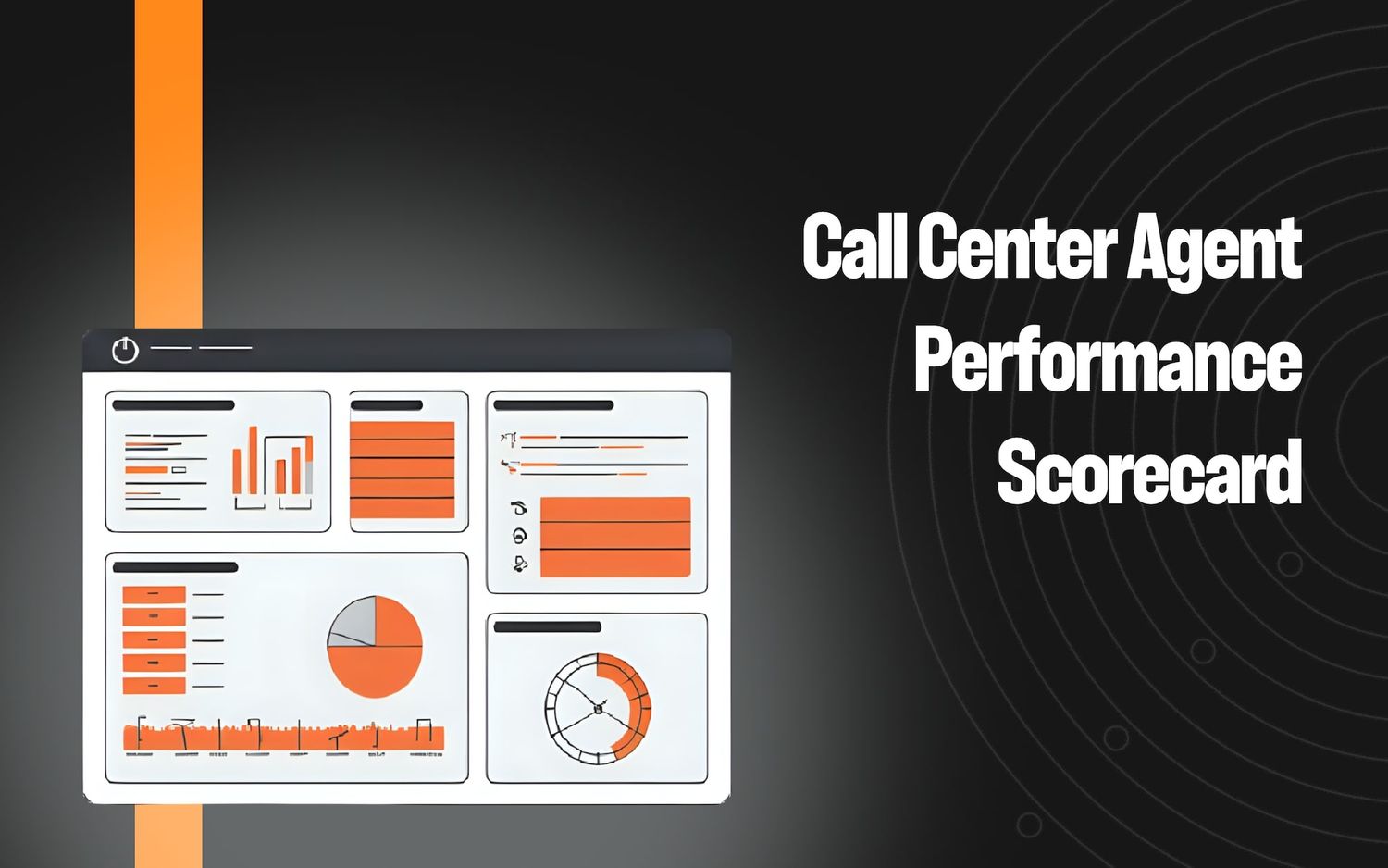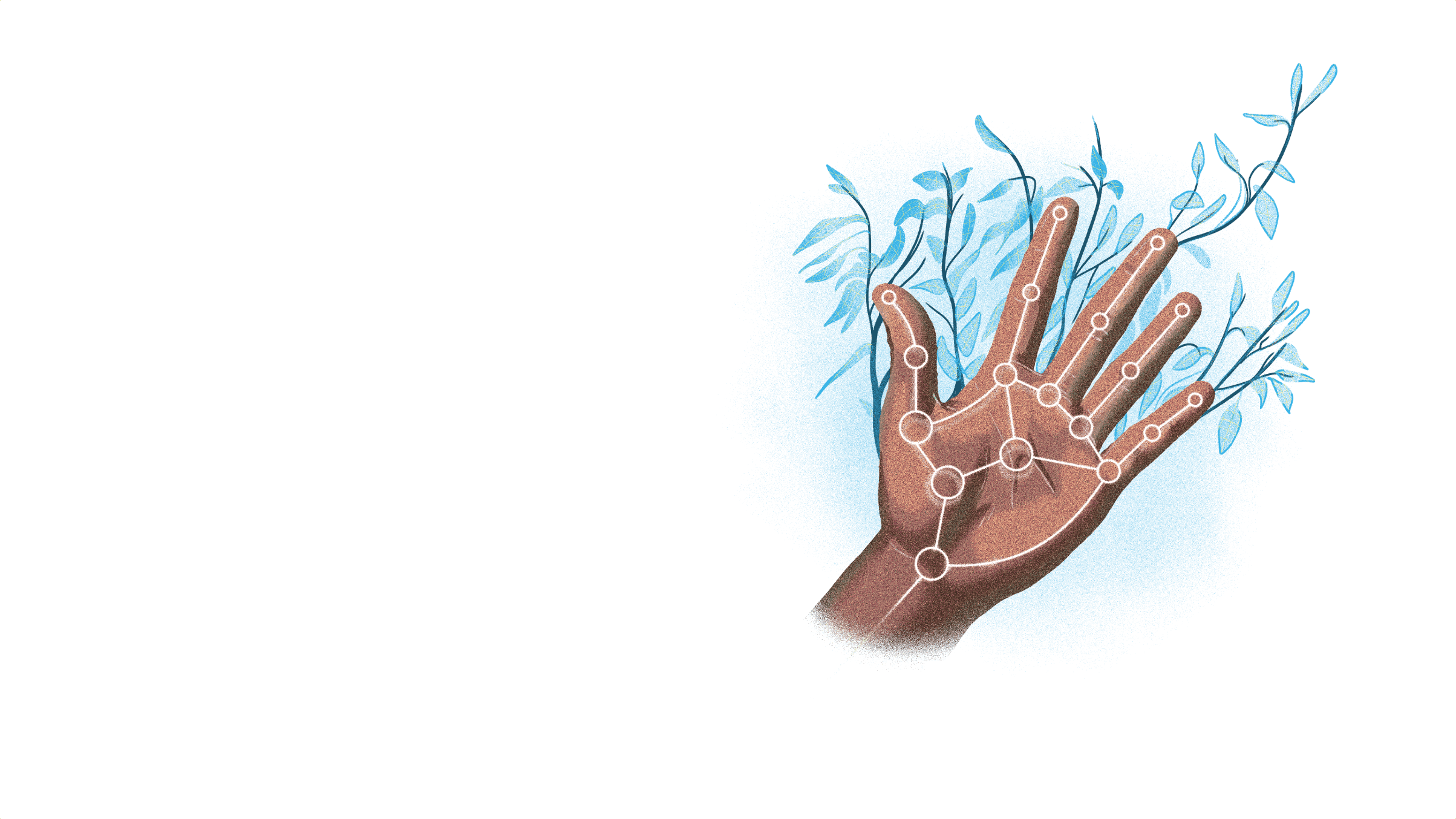Real-Time Speech Analytics: In-Depth Review and 3 Options

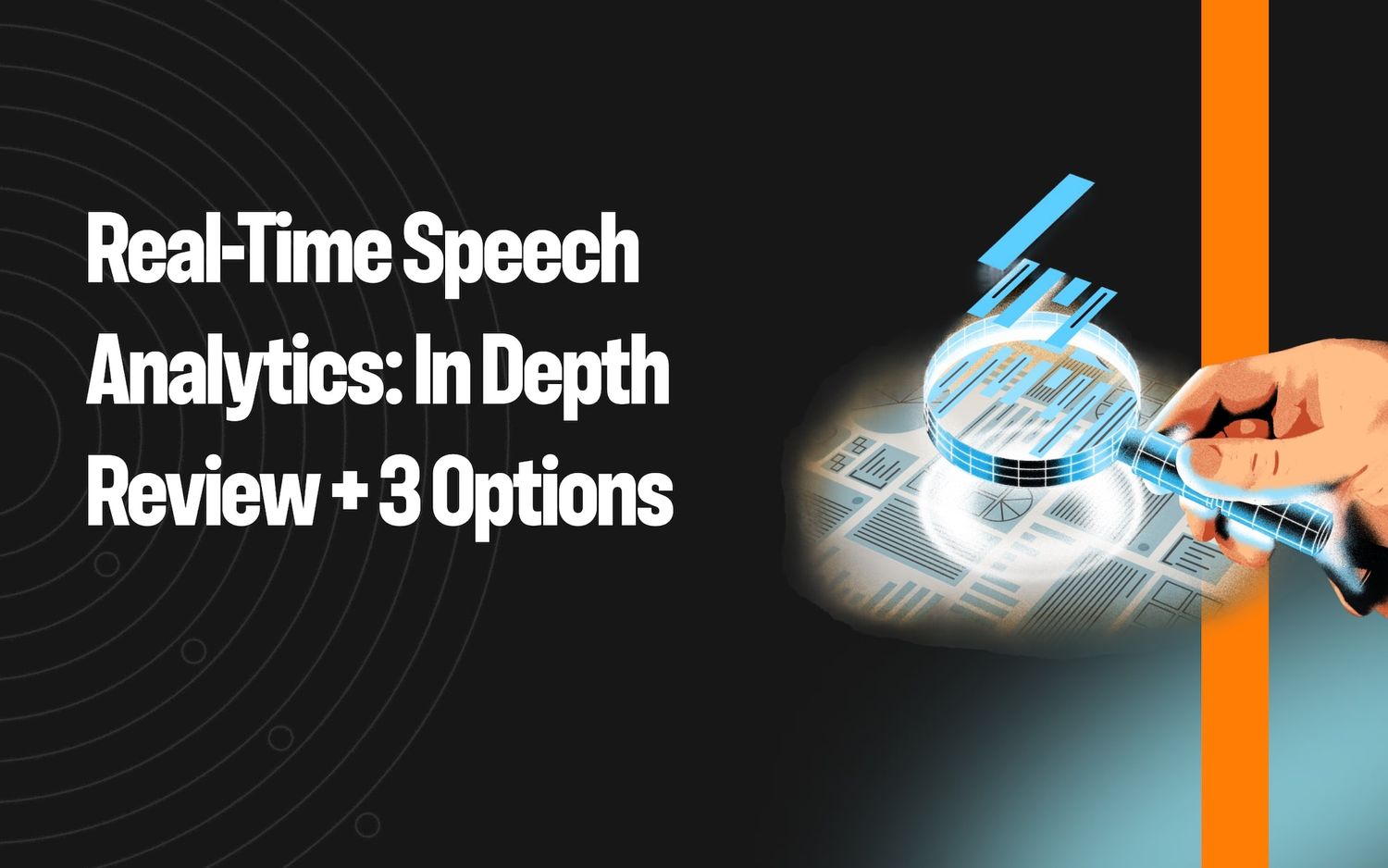
Real-time speech analytics enables agents and managers to assess spoken conversations as they happen, allowing them to improve issue resolution in the moment rather than after the fact. It’s primarily used by call center supervisors tasked with addressing issues as they arise to improve the customer experience.
Specifically, real-time speech analytics allows managers to:
- Monitor and analyze live calls to detect potential issues and intervene before they escalate.
- Prioritize their time and energy by identifying calls involving complex issues or opportunities for large sales.
- Assess agent performance in real-time and provide immediate feedback or support as needed.
- Track key performance indicators (KPIs) during calls, such as duration and customer satisfaction levels.
- Maintain regulatory compliance by flagging breaches as they occur.
Real-time speech analytics differs from post-call analytics, where interactions are reviewed after they end. While this activity is an important part of contact center quality assurance, it misses opportunities for intervention and on-the-spot training.
Below, we dive into how real-time speech analytics works and present four live analytics options to consider, starting with our platform, Level AI.
How Real-Time Speech Analytics Works
Real-time speech analytics continuously processes and analyzes spoken language during live interactions. It uses advanced technologies like natural language processing (NLP) and real-time transcription to break down a conversation into key components such as language patterns, emotional cues, and specific word meanings to generate immediate insights.
This frees managers from the need to listen in on entire calls to oversee interactions, permitting them to make better use of their limited time by better targeting their interventions.
Automating live speech analytics in this way permits call centers to accurately track 100% of ongoing conversations, ensuring that no interactions are overlooked and enabling more consistent and comprehensive quality management.
Live Speech Recognition and Transcription
Speech recognition software relies on complex models that have been trained on large datasets of spoken language to recognize and transcribe a wide range of accents, dialects, and languages.
Level AI uses automatic speech recognition (ASR) technology, which minimizes transcription errors and ensures a faithful representation of the conversation.
Level AI’s transcription AI is specifically trained on noisy call center data and fine-tuned to the unique terminology used by individual customers, delivering a word error rate that’s 7% lower than the industry standard.
Our software can automatically translate over 100 languages, and includes semantic AI capabilities for languages like German, French, and Spanish.
Understanding What’s Being Said
What all this really comes down to is how well a speech analytics system comprehends and interprets spoken language. Until recently, most systems relied on keyword detection to try to identify certain topics or intents.
For instance, if a customer mentions a certain combination of the words “cancel” and “account,” then the system flags this as an intent to cancel a service.
The limitation with this, however, is that it requires administrators to explicitly define many different combinations of such words to capture all the various ways a customer might express that intent.
It’s an approach that’s not only labor intensive but prone to missing important nuances or alternative phrasings. As a result, the system may overlook key details or misinterpret the context, leading to incomplete or inaccurate insights.
To overcome these limitations, modern speech analytics leverage advanced technologies like NLP and generative AI, which are much more adept at comprehending the true intent and context of conversations without relying on an exhaustive keyword list.
In the example about canceling an account, such an advanced system would naturally recognize when a customer wants to cancel their account even if they use less direct language. For instance, if a customer says, “I’m thinking about switching services,” the system would recognize this as a potential intent to cancel, capturing the underlying meaning of the words.
Understanding a customer’s true intent opens the doors to other kinds of analytics, like detecting sentiment and gauging satisfaction. By moving beyond simple keyword detection, these advanced systems can begin to identify emotional states — like positive or negative sentiments — that often accompany specific intents.
This deeper level of understanding allows businesses to respond more effectively in real-time, tailoring their interactions to better meet customer needs and expectations.
How Does Real-Time Analytics Differ from Conversational Analytics?
Real-time speech analytics is a subset of the broader field of conversational analytics and machine learning, focusing on analyzing spoken (versus written) conversations as they occur. While both real-time speech analytics and conversational analytics aim to extract meaningful insights from customer interactions, they differ in scope, application, and the types of data they analyze.
Conversational analytics is typically applied across a broader timeline and more channels, often after the interaction has concluded. Real-time speech analytics, on the other hand, focuses on surfacing immediate insights in situations where timing is crucial, such as detecting and addressing customer dissatisfaction before it escalates.
Real-time speech analytics differs from voice analytics, which focuses on the acoustic properties of speech — such as tone, pitch, and volume — providing insights into how something is said rather than what is being said. This is useful for detecting emotions or stress levels in a conversation but less effective for understanding the actual content or context of the dialog.
Text analytics, in contrast, deals with the analysis of written communication, including emails or chat logs. Unlike real-time speech analytics, text analytics is typically applied after the interaction has occurred, making it more suitable for in-depth, post-conversation analysis and long-term trend identification.
Top Options for Real-Time Speech Analytics
Below, we present four of the top real-time analytics software options for customer service organizations.
1. Level AI
Software That Understands Conversations as They’re Spoken
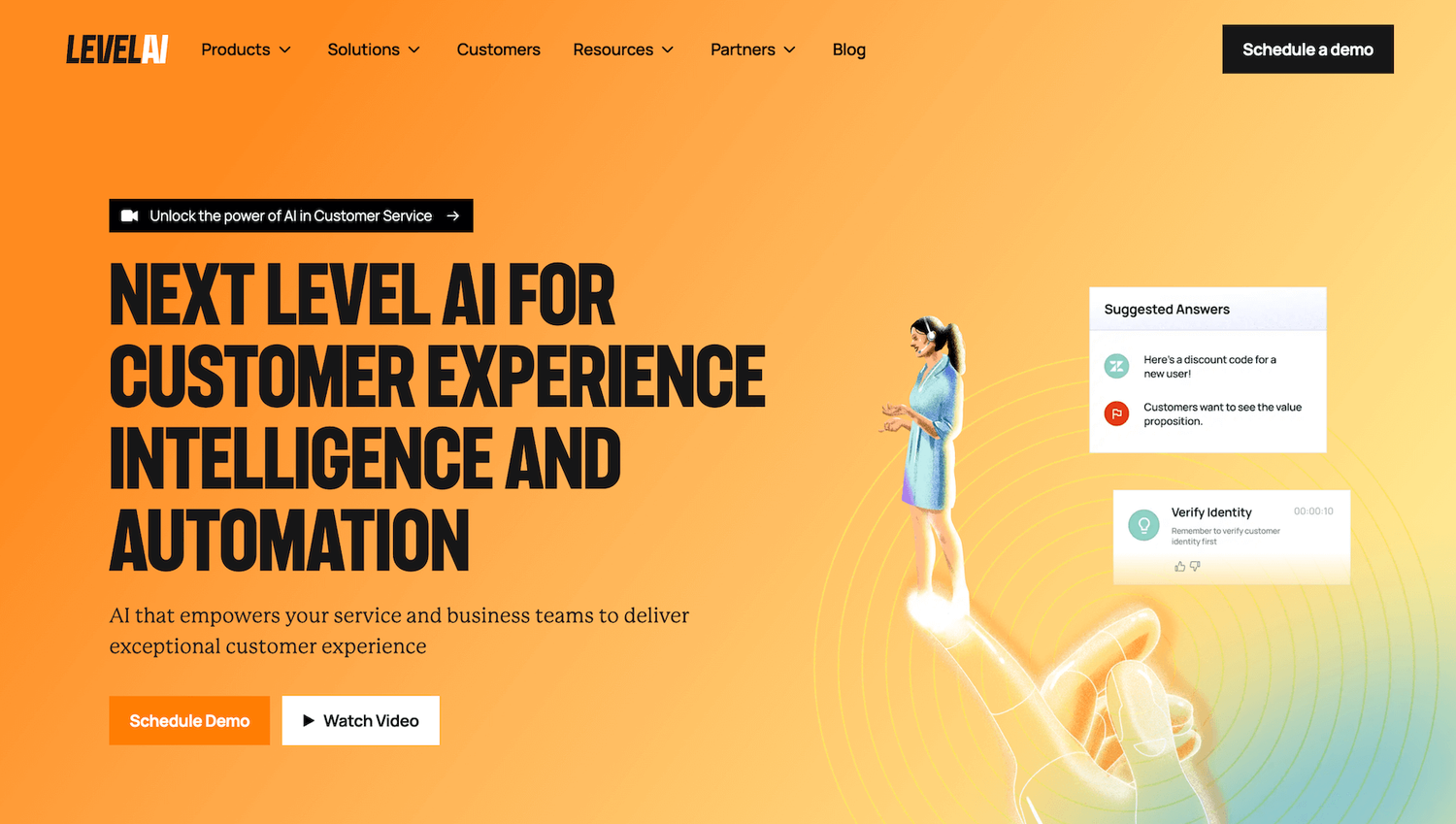
Level AI’s semantic intelligence provides in-depth insights into the content and context of conversations, enabling managers to monitor customer emotional states and agent performance in real time during live calls.
The platform’s live speech analytics benefits agents by providing them with instant, contextually relevant answers during calls. This reduces customer hold times as agents need to pause support conversations much less frequently than if they had to look up the answers themselves.
Beyond live features, Level AI automates the analysis of 100% of interactions (phone, chat, email, etc.) to extract valuable trends and patterns for quality assurance and Voice of the Customer (VoC) insights.
Live Monitoring Capabilities for Managers
Traditionally, customer service managers have relied on either randomly sampling a small percentage of calls in progress for quality assurance, or waiting for agents to request help, leaving them reactive rather than proactive in identifying calls that need their attention.
While this approach allows for some level of oversight, it leaves much to chance and can result in missed opportunities to intervene in calls that truly require their involvement.
Level AI’s Real-Time Manager Assist highlights such opportunities for busy managers, allowing them to monitor all conversations ongoing in their department.
For instance, the software’s central feature is a dashboard highlighting key stats for all calls in progress, including customer satisfaction and agent performance:
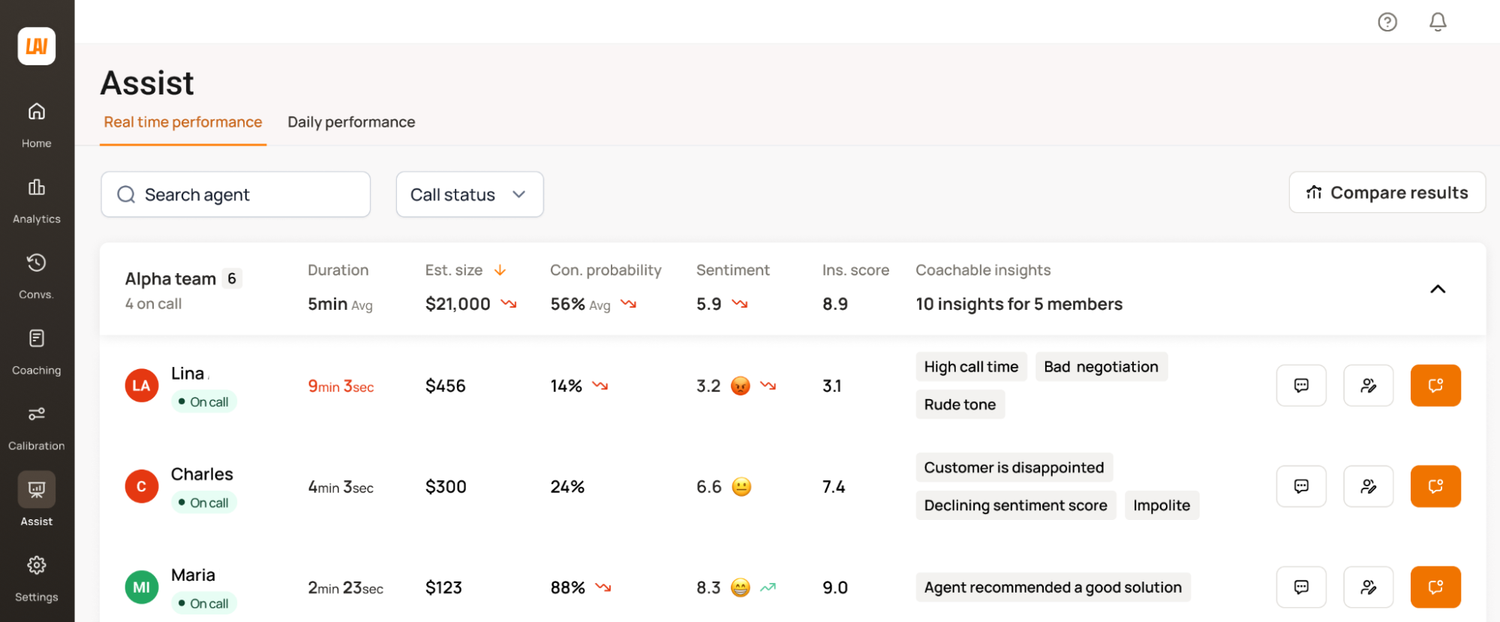
Not only does the software show helpful KPIs like agent name and call duration, it also scores customer sentiment in real time using a dynamically updated Sentiment Score.
This advanced feature scores customer sentiment in a range from 0 to 10 and reflects the customer’s overall experience with the service team thus far in their conversations. We calculate this score dynamically as the discussion progresses, with zero representing the most extreme negative sentiment and 10 the most positive, with neutral sentiment hovering at 6.
Unlike many other products that simply report a positive or negative customer sentiment reading, we track and analyze a range of emotions, including:
- Anger
- Disapproval
- Disappointment
- Worry
- Happiness
- Admiration
- Gratitude
A Sentiment Score gives you a strong indication of how a call with a particular customer is going and whether it’s necessary to give it a closer look and possibly take action. To calculate this score, we rely on the same underlying AI models as our post-call QA platform (described below).
The Real-Time Performance dashboard also auto-scores agent performance, allowing you to correlate this with customer sentiment.
Our InstaScore provides a single score, updated in real-time, that rates agents against rubrics and gives you immediate feedback on how well they’re handling the call. Level AI comes with predefined rubrics out of the box; you can also customize the platform at a deep level by defining your own, business-specific rubrics.
InstaScore’s are calculated based on the system’s assessment of how well an agent’s doing against rubrics such as:
- Verified customer's identity and account details.
- Maintained a professional and courteous tone.
- Managed the call efficiently without unnecessary delays.
- Thanked the customer before ending the call.
Clicking on a particular InstaScore displays linked stats and other metrics designed to show you specific evidence for the reasons behind the value that InstaScore shows:
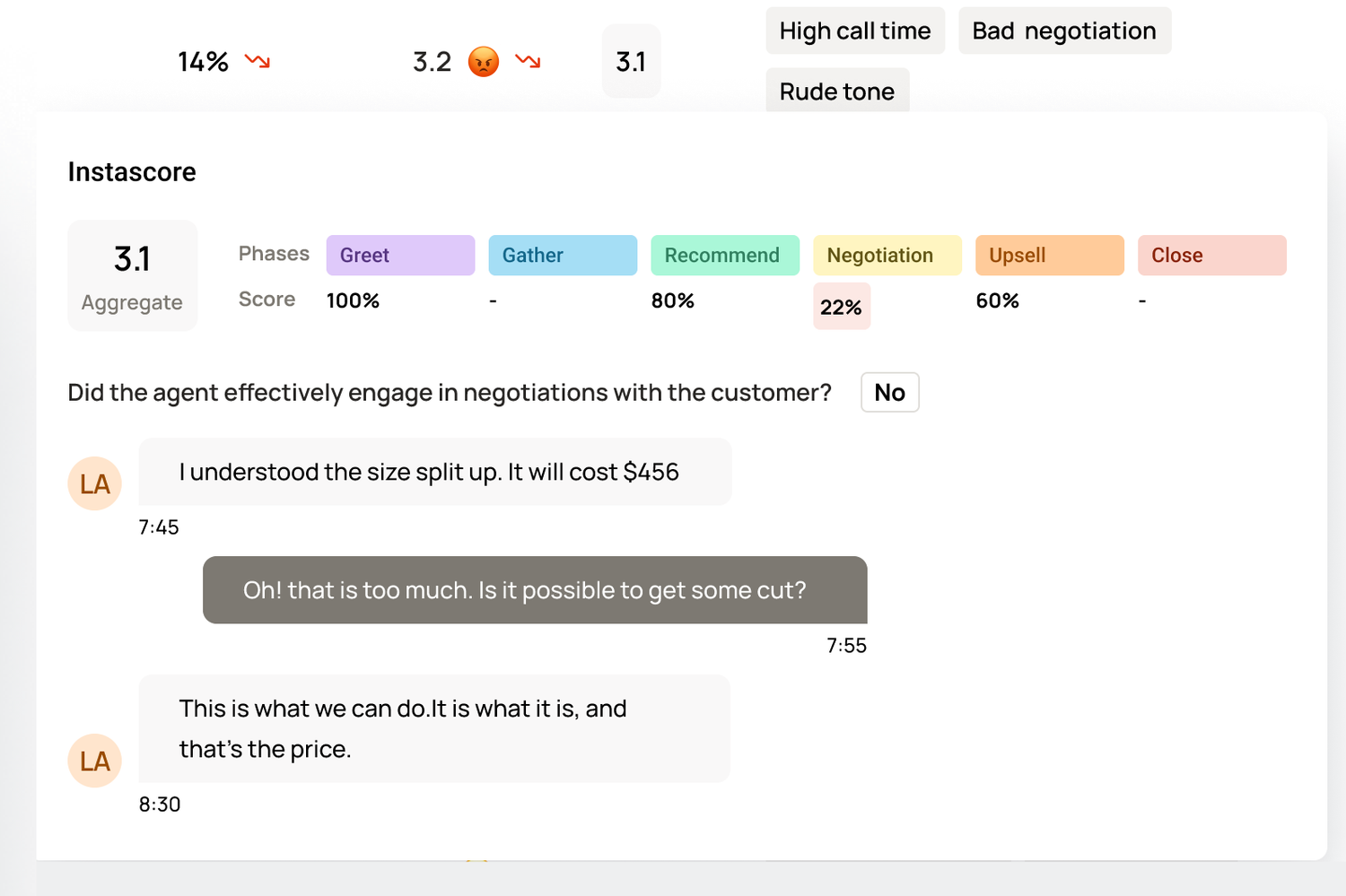
Such automated verifications wouldn’t be possible without Level AI’s semantic intelligence model, which understands the content of what agents and customers say during support calls.
Level AI’s Coachable Insights feature takes this a step further by tracking agent behaviors in real-time, displaying tags like "high call time" or "agent recommended a good solution” next to each conversation.
These real-time insights allow supervisors to quickly identify areas where an agent might be struggling (or doing well) and provide immediate, targeted feedback, ensuring that each call is handled as effectively as possible.
Once a coaching opportunity has been identified, you can add the agent to the platform’s Agent Coaching module with one click.
Real-Time Manager Assist also includes tools that estimate the deal size and conversion probability of the customer currently engaging with support, which allow supervisors to identify high-value opportunities (and appropriately guide agents using Whisper) as they develop.
The platform also allows users to configure notifications for when certain limits are reached. This comes in handy when a manager is too busy to continuously monitor all conversations and just wants to be notified with regards to the breaching of critical thresholds like customer churn.
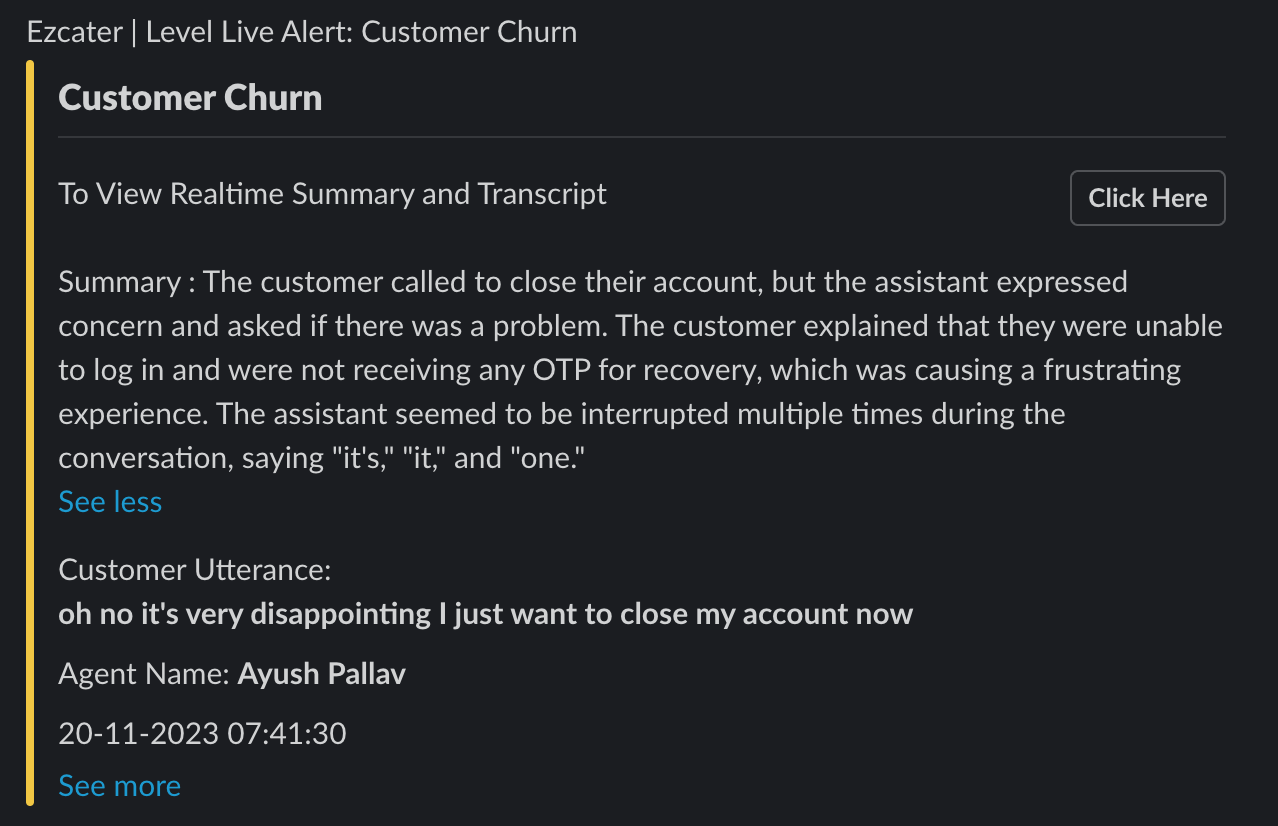
Users can configure alerts to be sent out on Slack or Microsoft Teams.
Providing Agents with Instant Answers During Calls
Until now we’ve focused on live speech analytics for managers to help them proactively monitor and manage ongoing conversations in real-time.
Real-Time Agent Assist uses real-time speech analytics to provide customer support agents with timely answers during support calls, reducing wait times and ensuring that agents are equipped to handle even the most complex queries on the spot.
The system accomplishes this by displaying the appropriate knowledge base information in the moment they need it, saving them time in having to put customers on hold to manually look up the information.
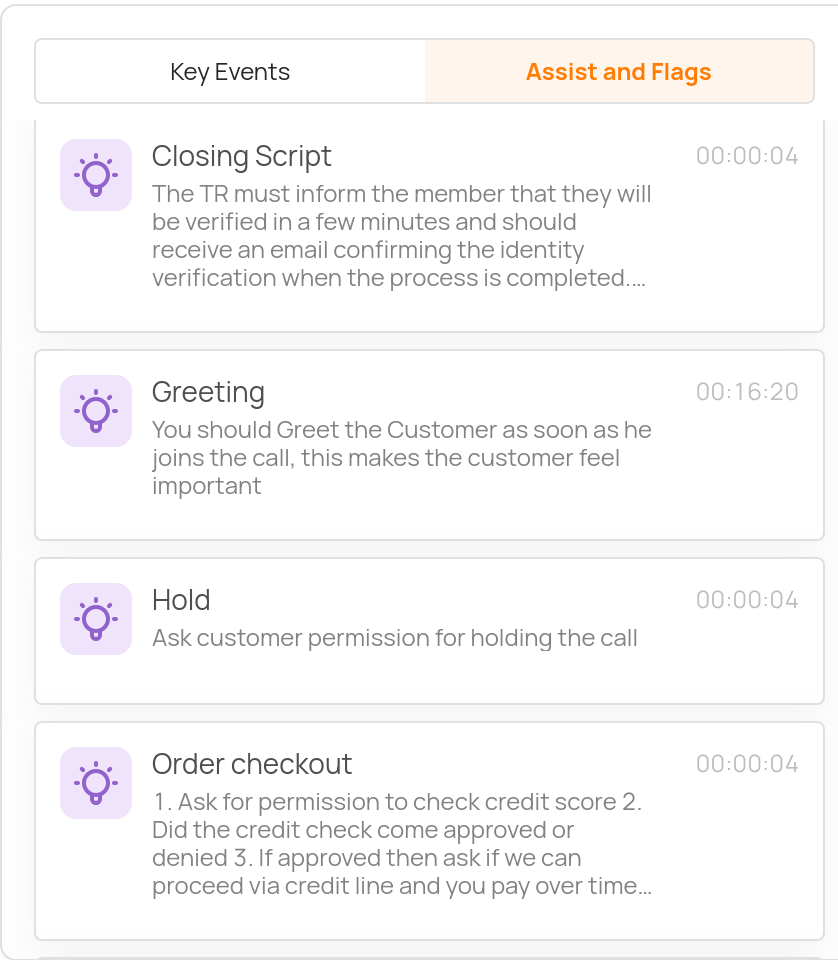
Level AI provides a unified feed of dynamically changing information like FAQs, hints, and knowledge base articles.
It’s also easy to configure your front-line chatbot to hand cases off to Real-Time Agent Assist as the need arises.
If an agent needs to manually search for specific information, our Chat with Your Knowledge Base proactively auto-fills the search bar with results related to the current topics under discussion:
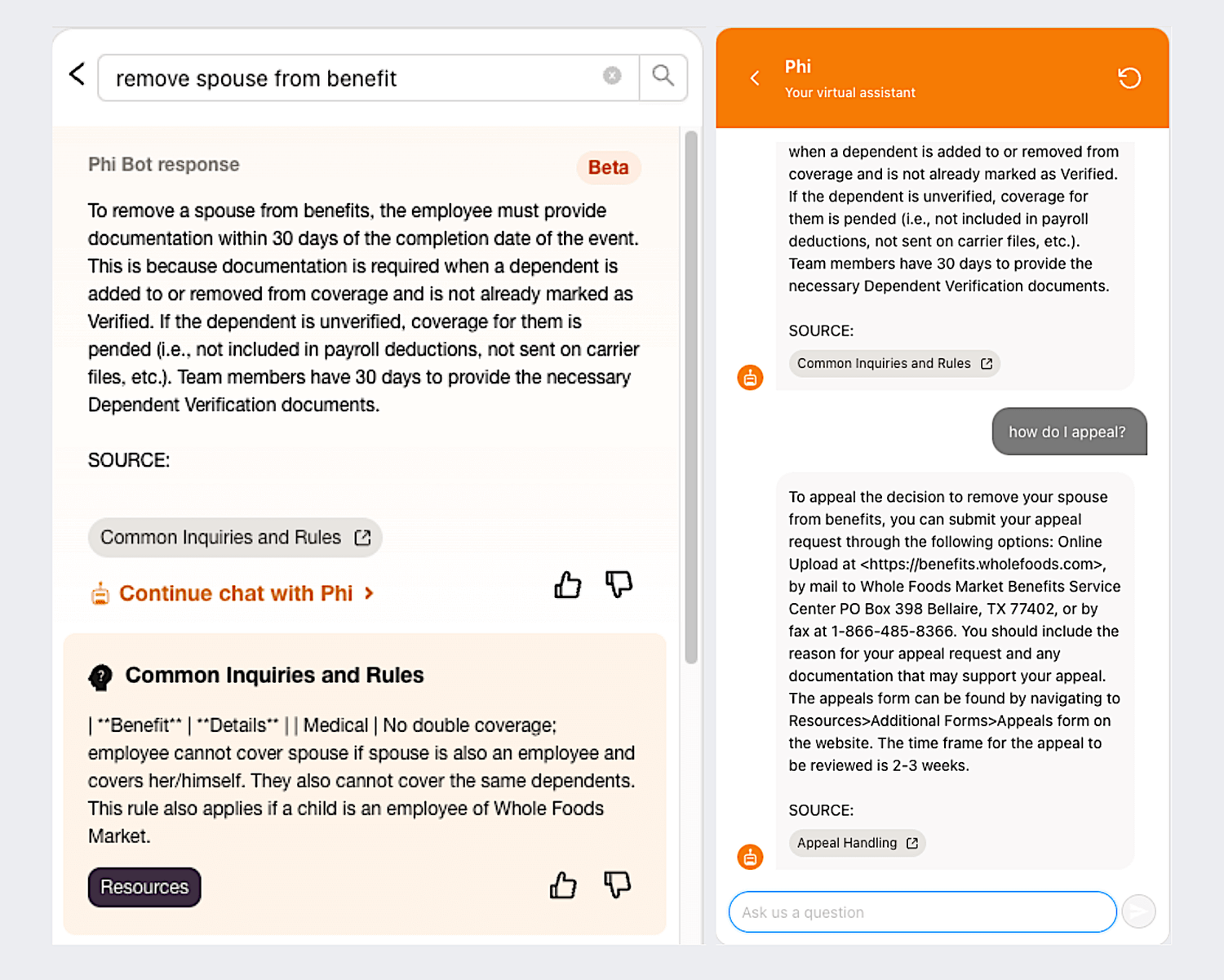
By showing the information the agent likely needs at any given moment, the system can significantly reduce the stress involved in having to spend time searching while a customer waits on the other end of the line.
In fact, some Level AI customers have reported a 13% decrease in average handle times thanks to the immediate answers that agents get when using the platform.
All of our knowledge cards additionally feature thumbs up and down icons, allowing agents to train the system to provide better responses by approving or disapproving the answers shown.
Post-Call Quality Assurance
Level AI’s semantic understanding of speech also provides broader benefits to QA staff, managers, and coaches looking to spot trends and teachable moments in past conversations.
Besides real-time features, the platform offers post-call speech analytics for those looking for deeper insights across all customer data, such as VoC insights and flexible reporting that allows users to answer questions like:
- Which types of customer inquiries are most frequently associated with lower satisfaction scores?
- What patterns in agent behavior correlate with higher customer retention rates?
- Are there particular products or services that consistently generate higher levels of customer satisfaction?
- How do first-contact resolution rates vary depending on the time of day or agent workload?
With Level AI’s Query Builder, users can integrate data from various sources — both within the Level AI platform, like sentiment analysis and tagged customer intents, as well as from external systems such as your CRM, knowledge base, and ticketing system. This flexibility allows the creation of unique, intuitive dashboards that uncover unexpected trends and deliver valuable insights into your customers and business performance.
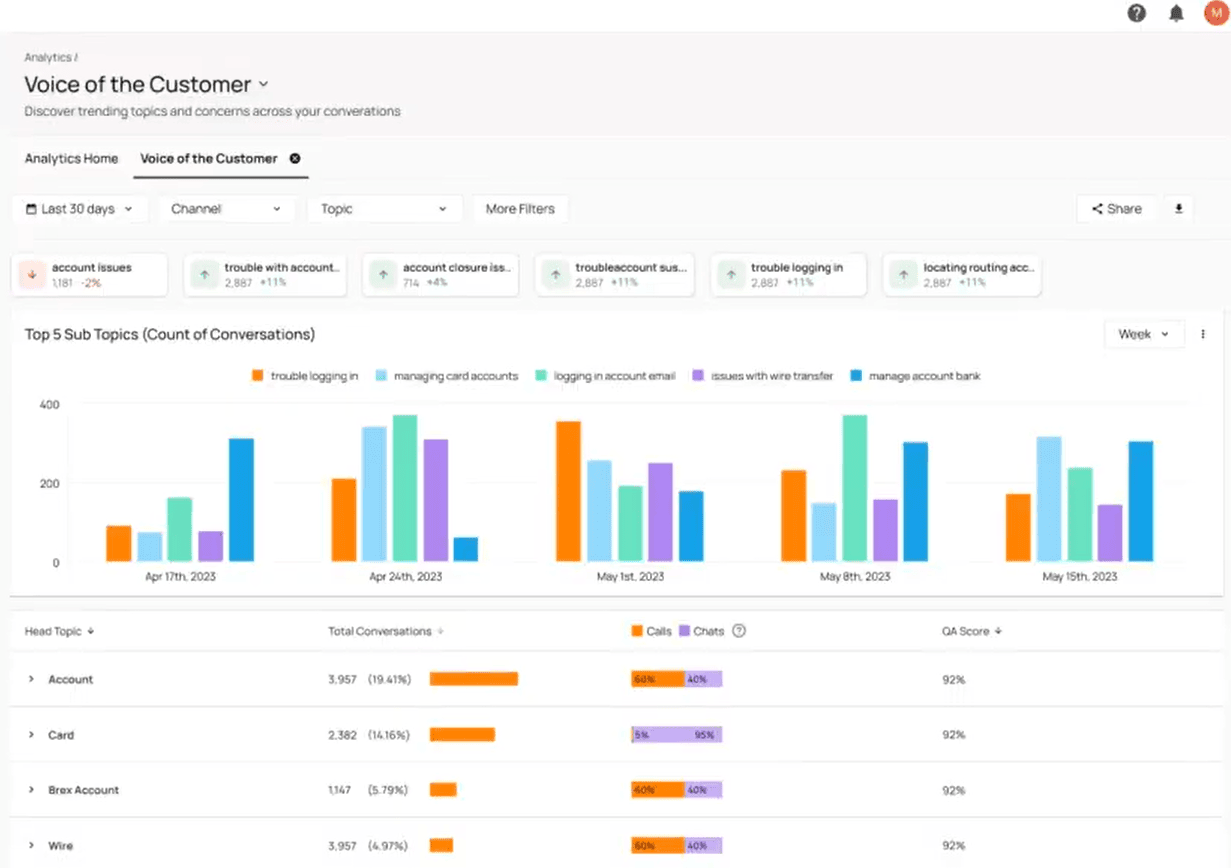
Additionally, the platform not only gathers and aggregates standard VoC metrics like CSAT, FCR, and CES without users needing to send out post-call surveys, but it goes beyond such metrics to identify trends that users might not have been aware of, such as:
- Patterns in customer interactions related to billing errors, payment difficulties, or confusion over pricing.
- Customer insights related to reporting issues with service outages or difficulties accessing services.
- Patterns in customer feedback regarding loyalty programs, such as difficulties redeeming rewards or dissatisfaction with program benefits.
Such revelations allow organizations to quickly identify and take the necessary steps to get out ahead of potential problems and customer concerns to improve service quality and drive greater customer satisfaction.
Ready to try Level AI’s live speech analytics tools? Book a call with the Level AI team today to see how we can help you improve your customer experience and drive business growth.
2. CallMiner
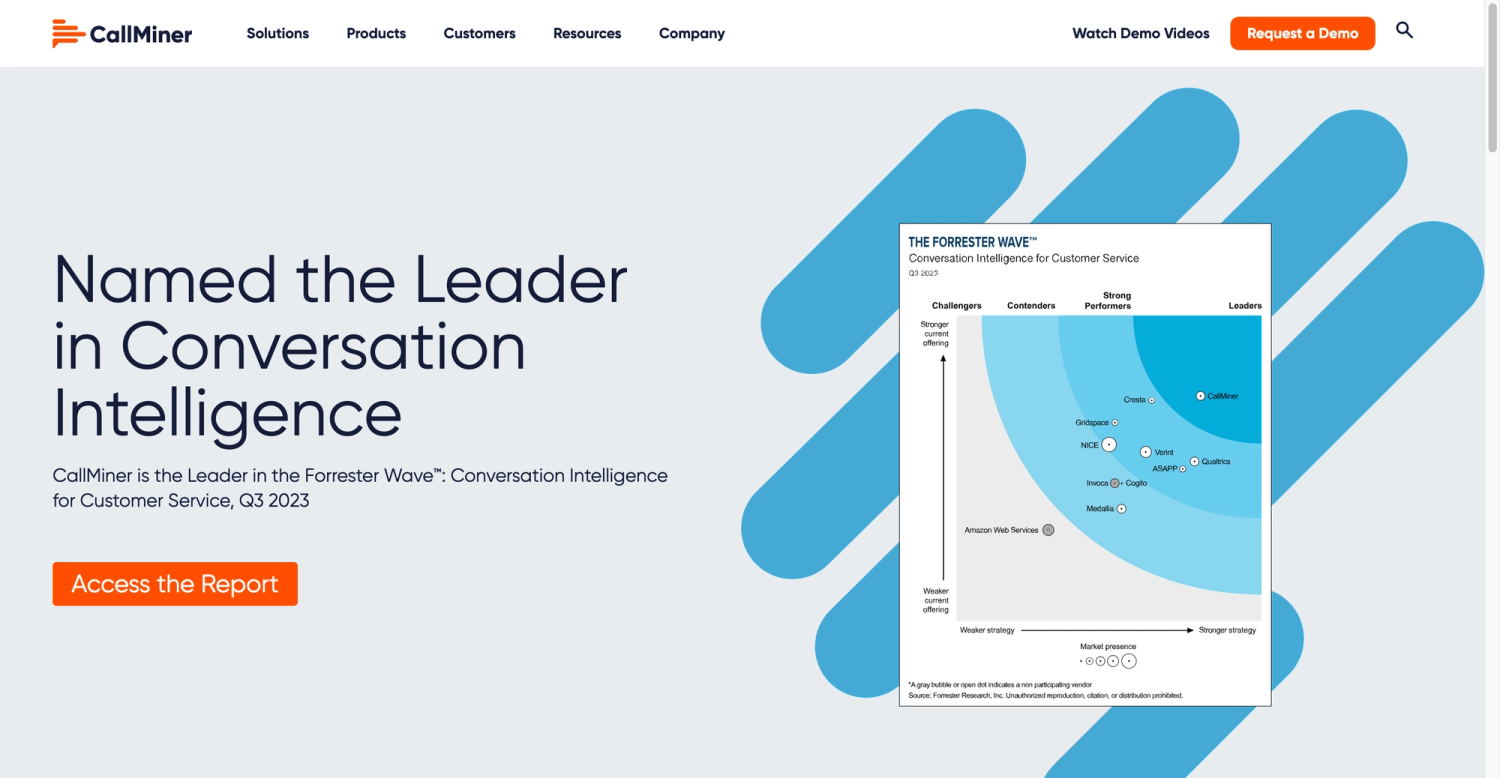
CallMiner provides features for omnichannel speech analytics, including analytics for customer conversations. Their software uses voice and speech analytics technology to transcribe and extract actionable insights and patterns to improve business performance.
In particular, CallMiner Eureka uses artificial intelligence to apply automated scoring and emotion analysis, and includes features for:
- Automatically notifying contact center agents or supervisors when customer interaction indicators are activated during a live call.
- Reducing customer issue escalations, resolving potential compliance risks, and recovering from a negative customer interaction in real-time.
- Improving agent performance by providing guidance and directing agent attention with self-customizable alert thresholds.
To get a quote, you have to contact their sales team, as they don’t provide pricing guidance on their website.
3. Verint
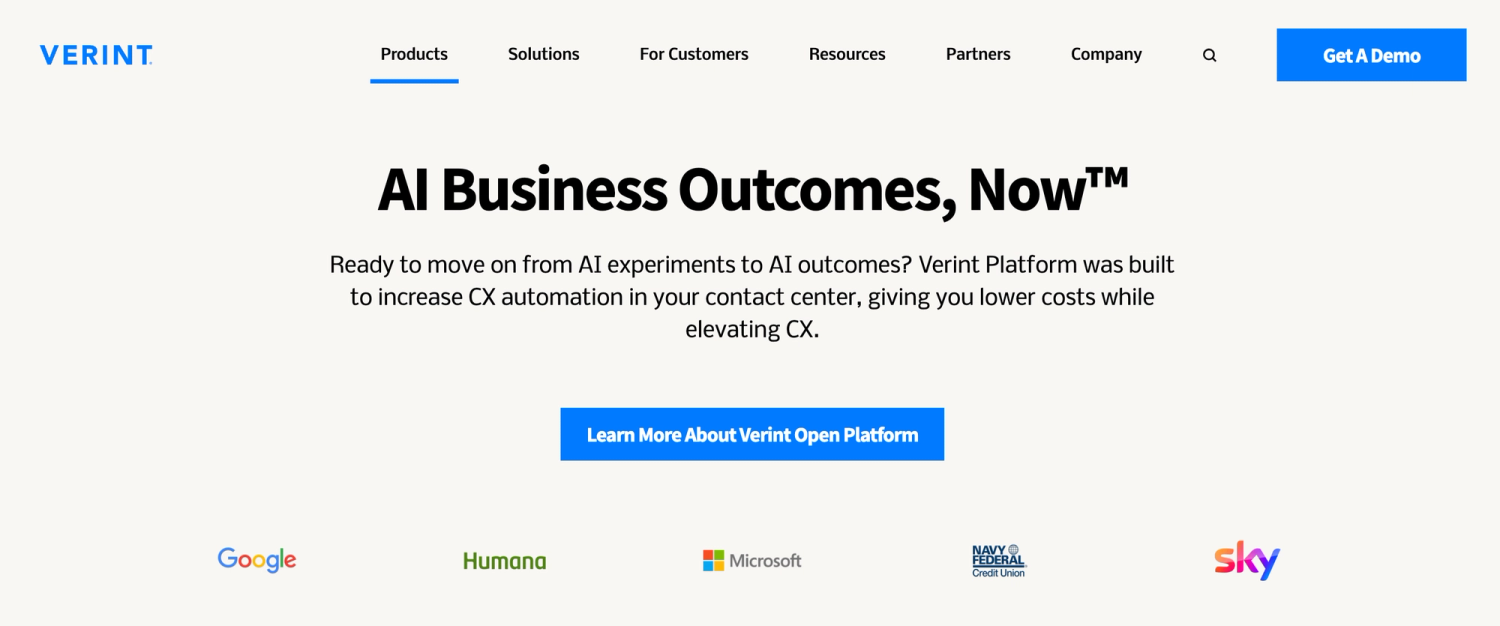
Verint is a software suite primarily focused on customer engagement, scheduling, and analytics, and caters to large enterprises across various industries such as banking, insurance, public sector, retail, and telecommunications.
The platform’s speech analytics solutions surface intelligence from recorded customer calls so organizations can optimize their service processes. Verint offers three main features around real-time speech analytics:
- Interaction Recording — captures, indexes, and retrieves voice, screen, and other methods of interaction for compliance purposes.
- Speech Analytics — identifies, groups, and organizes words and phrases spoken during calls into themes, revealing trends and areas of concern.
- Desktop and Process Analytics — provides visibility into how employees use different systems, applications, and processes to perform their work.
Verint doesn’t disclose pricing, but you can sign up on their website for a demo.
4. Dialpad

Dialpad is a voice-over-IP (VoIP) platform that helps businesses manage calls, texts and voicemails. It weaves NLP technology into voice, messaging, and meeting applications to improve efficiency in customer service and sales and better understand the customer journey.
The platform offers the following features:
- Speech analytics software to provide agents with hints and helpful information based on what a caller says.
- Automatic summarization of voice calls to make it easier for managers to surface particular points from a specific discussion.
- Conversation search that allows managers to search transcripts for specific keywords to review what was previously discussed.
Dialpads’s pricing starts at around $15 per user per month (annual billing), and is based on the functionality and add-ons that you purchase. You can discover their offerings by signing up for a free trial on the website.
Get Started with Level AI’s Real-Time Speech Analytics
Level AI’s secure and customizable generative AI capabilities let it understand and analyze conversational content to give contact center management situational awareness of how calls are going and how agents are doing. This saves supervisors time and allows them to know exactly where and when to intervene.
Ready to try Level AI’s live speech analytics? Book a call with the Level AI team today to see how we can help you improve your customer experience and drive business growth.
Keep reading
View all

